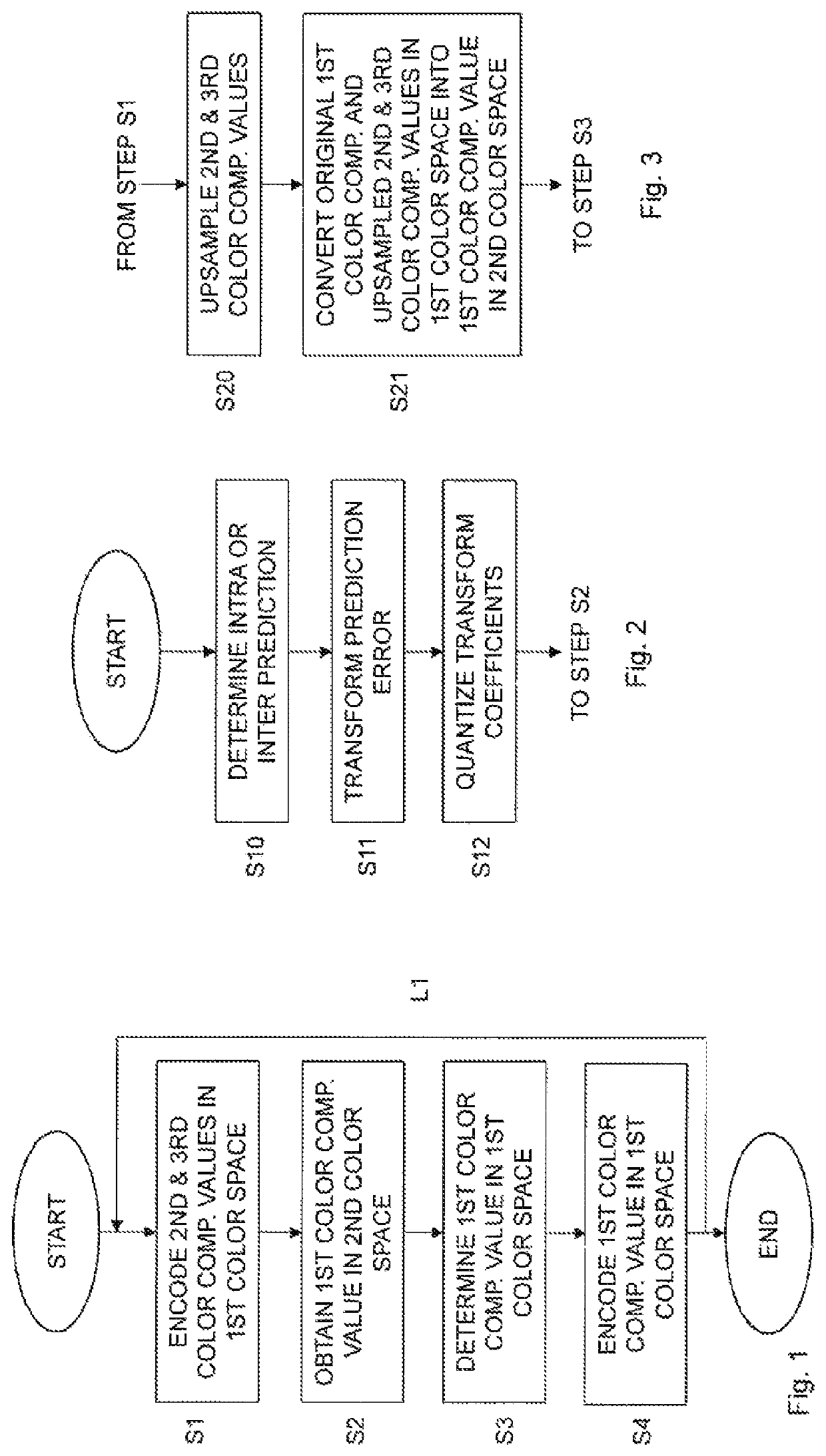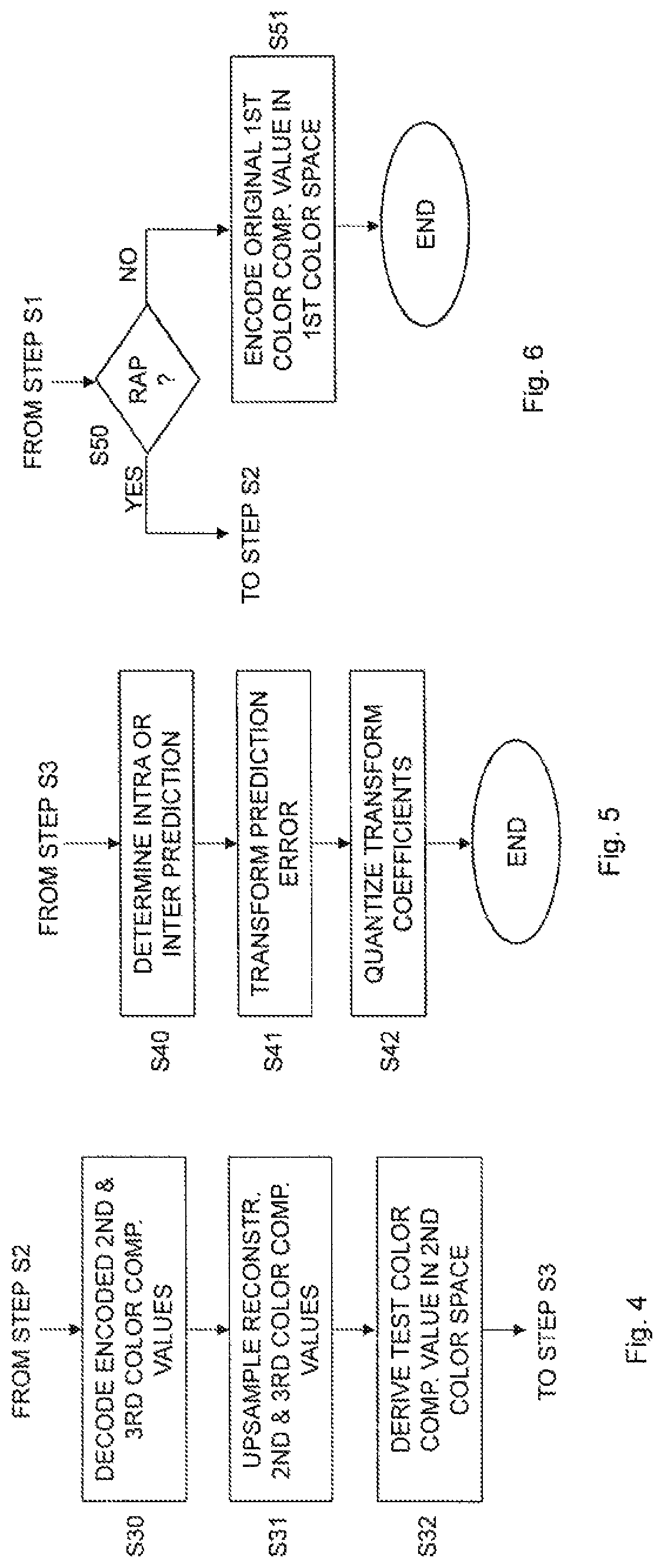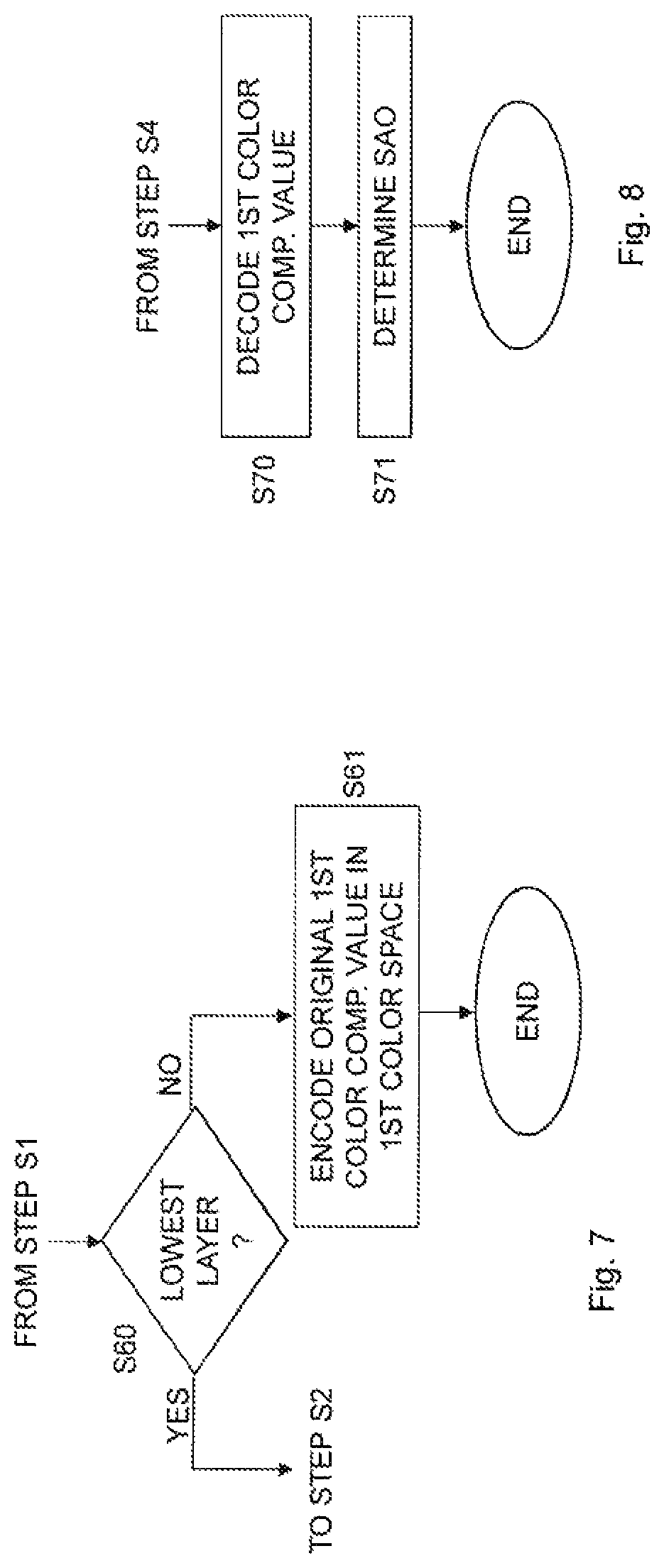Encoding a pixel of an input video sequence
- Summary
- Abstract
- Description
- Claims
- Application Information
AI Technical Summary
Benefits of technology
Problems solved by technology
Method used
Image
Examples
first embodiment
[0129]In the first embodiment, the SAO is determined by minimizing the squared error or the absolute error between the first color component value in the first color space as determined in step S3 in FIG. 1 and a sum of the SAO and the reconstructed first color component value obtained in step S70.
second embodiment
[0130]In the second embodiment, the SAO is determined by minimizing the rate-distortion (RD) cost J calculated as J=D+λR, wherein D is distortion representing a difference between the first color component value in the first color space as determined in step S3 in FIG. 1 and a sum of the SAO and the reconstructed first color component value obtained in step S70, R is the amount of bits spent for encoding the SAO and λ is the Lagrange multiplier.
[0131]The above described approach can also, or alternatively, be used to determine other offsets or filter parameters traditionally used during encoding and decoding of video sequences. For instance, in-loop filters, such as deblocking filters and adaptive loop filters (ALF), which are further discussed herein, could be determined substantially as described in the foregoing with reference to SAO offsets.
[0132]In some applications, it may be advantageous to turn off SAO. For instance, in HEVC may be turned off for 64×64 blocks of pixels.
[0133...
PUM
 Login to View More
Login to View More Abstract
Description
Claims
Application Information
 Login to View More
Login to View More - R&D
- Intellectual Property
- Life Sciences
- Materials
- Tech Scout
- Unparalleled Data Quality
- Higher Quality Content
- 60% Fewer Hallucinations
Browse by: Latest US Patents, China's latest patents, Technical Efficacy Thesaurus, Application Domain, Technology Topic, Popular Technical Reports.
© 2025 PatSnap. All rights reserved.Legal|Privacy policy|Modern Slavery Act Transparency Statement|Sitemap|About US| Contact US: help@patsnap.com



